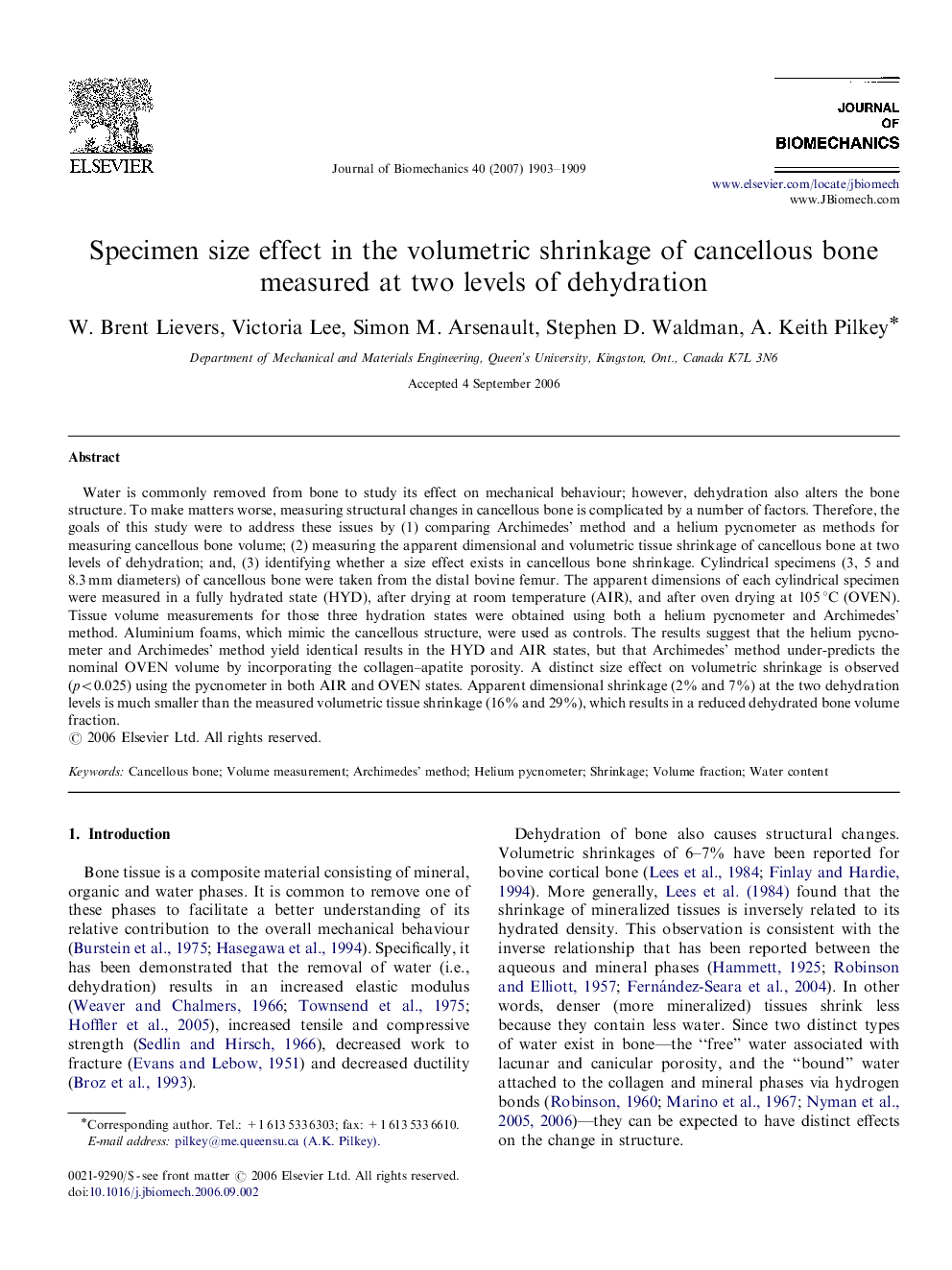| Article ID | Journal | Published Year | Pages | File Type |
|---|---|---|---|---|
| 874329 | Journal of Biomechanics | 2007 | 7 Pages |
Water is commonly removed from bone to study its effect on mechanical behaviour; however, dehydration also alters the bone structure. To make matters worse, measuring structural changes in cancellous bone is complicated by a number of factors. Therefore, the goals of this study were to address these issues by (1) comparing Archimedes’ method and a helium pycnometer as methods for measuring cancellous bone volume; (2) measuring the apparent dimensional and volumetric tissue shrinkage of cancellous bone at two levels of dehydration; and, (3) identifying whether a size effect exists in cancellous bone shrinkage. Cylindrical specimens (3, 5 and 8.3 mm diameters) of cancellous bone were taken from the distal bovine femur. The apparent dimensions of each cylindrical specimen were measured in a fully hydrated state (HYD), after drying at room temperature (AIR), and after oven drying at 105 °C (OVEN). Tissue volume measurements for those three hydration states were obtained using both a helium pycnometer and Archimedes’ method. Aluminium foams, which mimic the cancellous structure, were used as controls. The results suggest that the helium pycnometer and Archimedes’ method yield identical results in the HYD and AIR states, but that Archimedes’ method under-predicts the nominal OVEN volume by incorporating the collagen–apatite porosity. A distinct size effect on volumetric shrinkage is observed (p<0.025) using the pycnometer in both AIR and OVEN states. Apparent dimensional shrinkage (2% and 7%) at the two dehydration levels is much smaller than the measured volumetric tissue shrinkage (16% and 29%), which results in a reduced dehydrated bone volume fraction.
